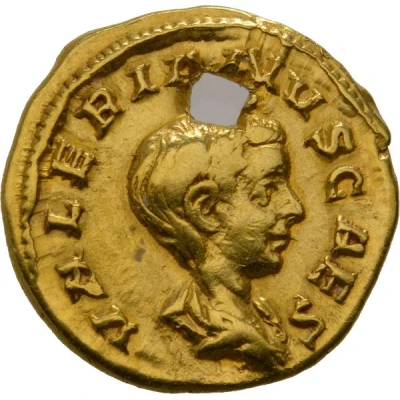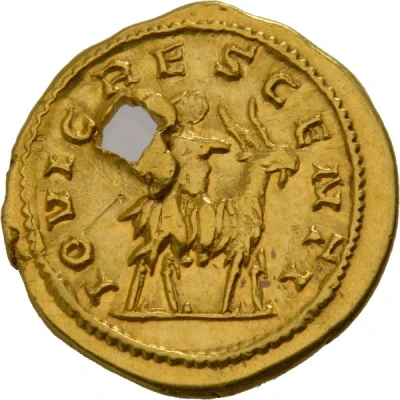


© Staatliche Münzsammlung München (CC BY-NC-SA 4.0 DE)
Aureus - Valerianus II IOVI CRESCENTI; Jupiter
| Gold | 2.3 g | 14.5 mm |
| Issuer | Rome › Roman Empire (27 BC - 395 AD) |
|---|---|
| Emperor | Valerian (Publius Licinius Valerianus) (253-260) Gallienus (Publius Licinius Egnatius Gallienus) (253-268) |
| Type | Standard circulation coin |
| Years | 255-256 |
| Value | Aureus (25⁄2) |
| Currency | Antoninianus, Reform of Caracalla (AD 215 – 301) |
| Composition | Gold |
| Weight | 2.3 g |
| Diameter | 14.5 mm |
| Shape | Round (irregular) |
| Technique | Hammered |
| Demonetized | Yes |
| Updated | 2024-10-05 |
| Numista | N#289795 |
|---|---|
| Rarity index | 100% |
Reverse
Child Jupiter on goat.
Script: Latin
Lettering: IOVI CRESCENTI
Translation: To the thriving of Jupiter
Comment
Example of this type:Staatliche Münzsammlung München
Source:
Online Coins of the Roman Empire (OCRE)
Interesting fact
One interesting fact about the Aureus - Valerianus II (IOVI CRESCENTI; Jupiter) coin is that it features a unique design element - a small crescent moon on the obverse (front) side of the coin, which is a symbol of the Roman god Jupiter. This design was used during the reign of Emperor Valerian II (255-256 AD) and was meant to signify the emperor's connection to the gods and his role as a divine ruler. The inclusion of the crescent moon on the coin was a departure from the traditional designs used on Roman coins and highlights the influence of pagan beliefs and symbols in Roman art and culture.